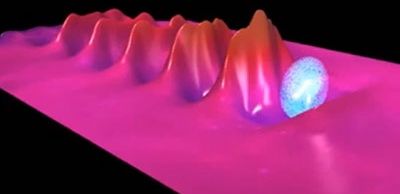The result is a compact accelerator that is not much larger than the laser used to create the plasma. That means that a laser plasma accelerator can be housed in a small building, rather than stretching over hundreds of metres or even several kilometres.
High-quality beam
While laser plasma accelerators exist at several laboratories around the world, EuPRAXIA steering-committee member Carsten Welsch says that “no infrastructure exists where the quality of the accelerated beam satisfies the requirements of industry”. Welsch, who is at the UK’s Cockcroft Institute of Accelerator Science and Technology, adds that “creating such a facility would be a major breakthrough and would attract users from many different sectors”.
Welsch told physicsworld.com that an important goal of EuPRAXIA is to develop technology to “sharpen” the energy spectrum of the electron beam produced by laser plasma accelerators. Today’s accelerators produce electrons with a very wide range of energies, and this spread would have to be reduced significantly before a facility could be used as a source of electrons for scientific and industrial applications.
